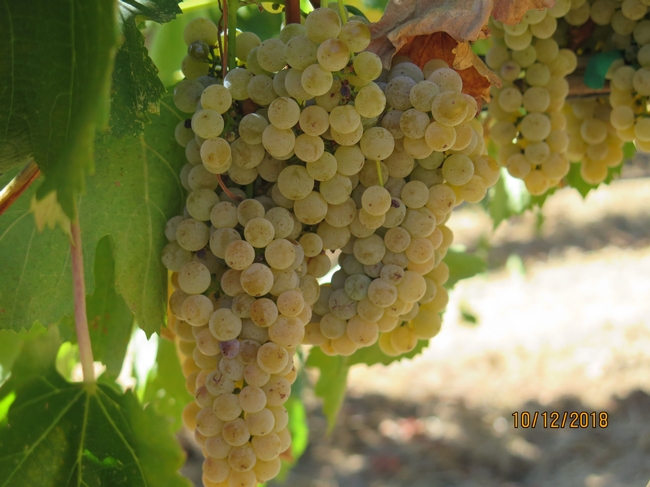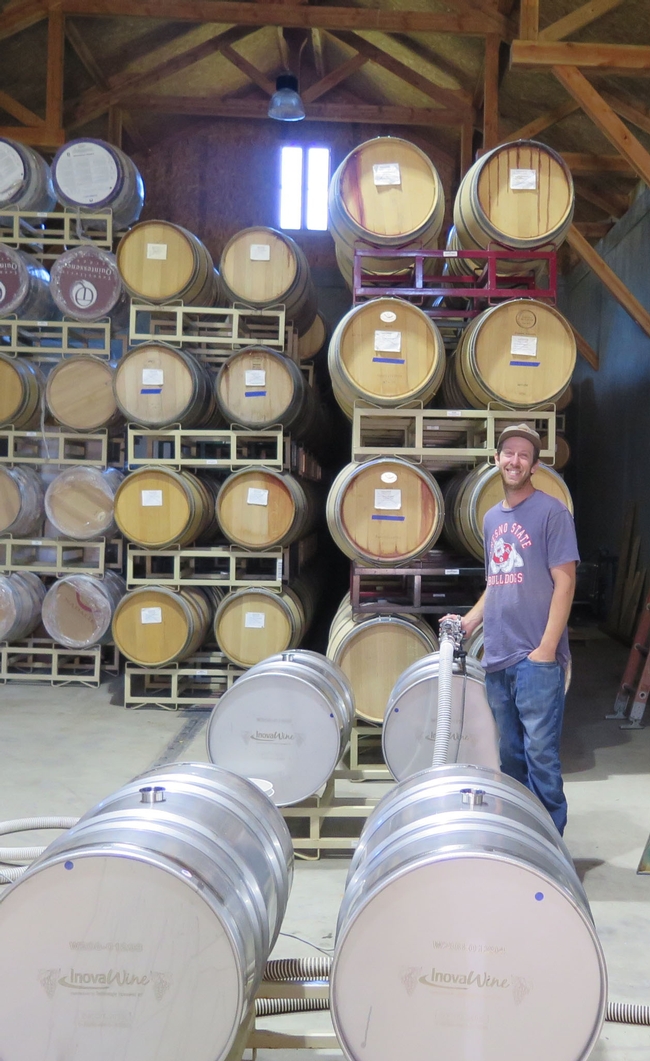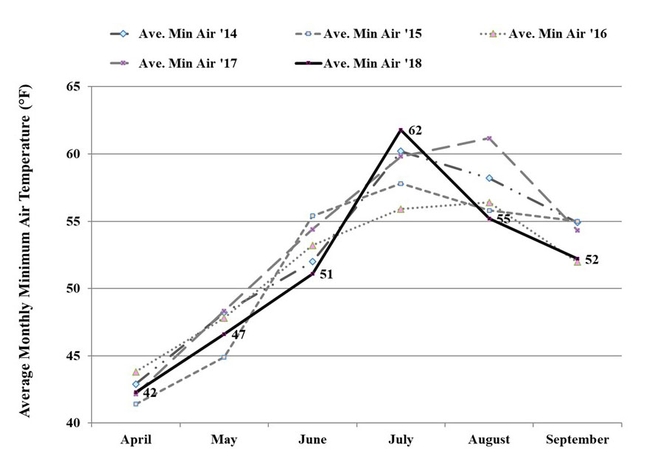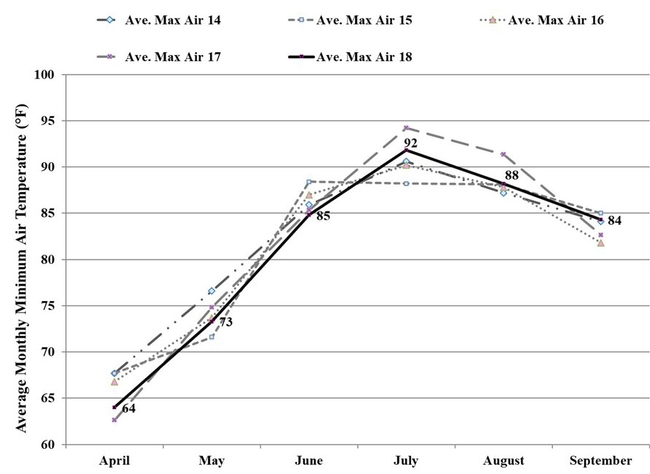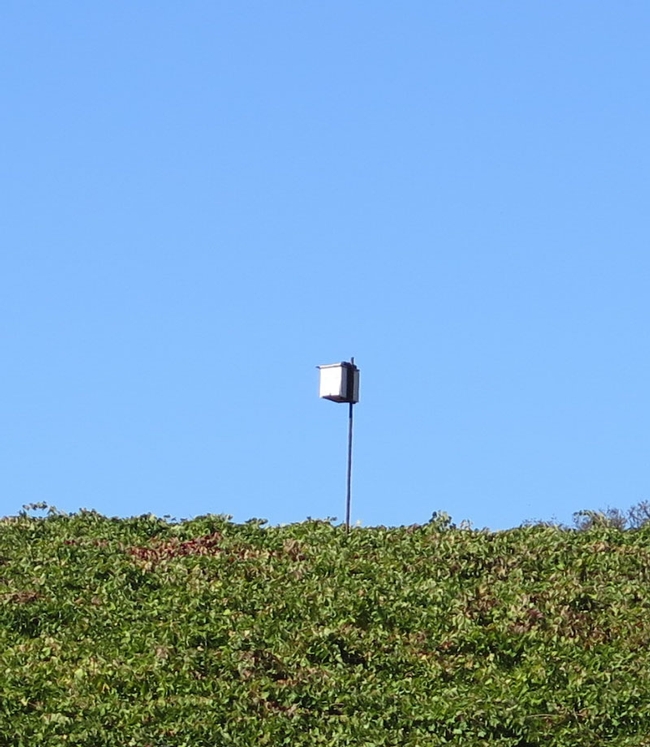Good things come to those who wait. Greco di tufo, a unique Italian variety growing at Shake Ridge Ranch in Amador County, is ready to harvest.
"Beautiful acidity" in the later red varieties was the common theme as the cooler August and September temperatures Michael Long, winemaker at Amador Cellars.
The sigh of collective relief after a season that began for some with a wet bloom, an April frost event, and crescendoed in July with a blanket of high smoke and higher temperatures was almost palpable. Nothing, in the farming world, is ever a sure thing until the crop is in and the bills paid.
"The biggest signature of the season for us was the April 17 frost", said Jonathan Lachs, who, with Susan Marks, farms a vineyard and makes wine at
Cedarville in Fair Play. The result of the rainy bloom in the Grenache had a positive twist, Susan noted. "There's some interesting cluster morphology out there, with clusters looser and shorter. The Grenache has a lovely dark color as a side effect".
Although some foothill Zinfandel remained unsold, a continuing trend following last year's Zinfandel dive, demand for Cedarville's organic fruit is up. "Buyers are very interested in our Zin", Jonathan said, "and some winemakers in the area are showing a renewed interest in Cab. as well, which is so great to see".
Other than in frosted locations, yields came in at average to slightly above, although crop estimates may have been misleading early on.
Challenges of the season included a high powdery mildew index in the cooler, higher elevations (perhaps the price paid for the payoff in slower ripening later), and mites, especially in some Zinfandel blocks and often brought on by heat and drought conditions. Some growers buck the miticide train and choose to use biological control to combat mite outbreaks. "We've been releasing 6 spotted thrips for years", Ann Kraemer, Shake Ridge Vineyards and Yorba Wines, told me. 6 spotted thrips is a generalist predator, which means it will prey on any soft bodied insect it can, including leafhopper nymphs. It has the ability to get under the webbing of spider mites to attack them, making it an excellent mite predator!
Average Monthly Minimum Temperature, April-Sept., in 2018 (highlighed in black) compared to the previous 4 years. Plymouth CIMIS station data.
Average Monthly Maximum Temperatures, April-Sept., in 2018 compared to the previous 4 years. Plymouth CIMIS data.
Concern about smoke due to the Ferguson and Mendocino Complex fires made for an "oppressive" July-when some days air particulate matter counts were deemed unsafe to work and crews were sent home early-all blew away by August as clear skies ushered in the first whites.
As we made it through her vineyard blocks, Ann made one more keen observation. "There were fewer birds this year. My owl boxes are empty and even when putting out netting I noticed there didn't seem to be as many birds as usual." One (unproven) theory: the high summer smoke affected the bird population, causing them to fly less or leave.
Now that the fruit is almost all in, let's hope the rainy season comes, and our owls return, soon.
